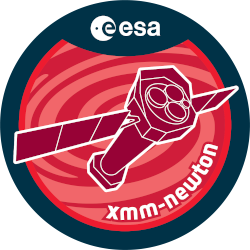

| Proposal ID | 074402 |
| Title | The puzzling activity cycle of the planet host star iota Hor |
| Download Data Associated to the proposal | https://nxsa.esac.esa.int/nxsa-sl/servlet/data-action-aio?obsno=0744020301 |
| DOI | https://doi.org/10.5270/esa-spdsab6 |
| Principal Investigator, PI | Dr Jorge Sanz-Forcada |
| Abstract | The discovery of a coronal cycle in iota Hor represents the shortest observed todate, in good agreement with chromospheric observations. A longer term trendseems to modulate the outcome of the 1.6 yr cycle. The most recent data couldindicate that the minimum of a long term cycle has been reached and the activitycould be increasing in the next years. This might offer the unique possibilityto observe for the first time a double coronal cycle similar to those observedin the chromosphere of other stars. The iota Hor cycle might be the paradigm ofthe first activity cycles in the life of a solar-like star; besides, a jovianplanet orbits the star at 0.9 a.u. We intend to complete the coverage of a newcoronal cycle, and to monitor the interplay with a possible longer term cycle. |
| Publications |
|
| Instrument | EMOS1, EMOS2, EPN, OM, RGS1, RGS2 |
| Temporal Coverage | 2014-05-18T00:55:36Z/2015-02-06T18:27:07Z |
| Version | 17.56_20190403_1200 |
| Mission Description | The European Space Agencys (ESA) X-ray Multi-Mirror Mission (XMM-Newton) was launched by an Ariane 504 on December 10th 1999. XMM-Newton is ESAs second cornerstone of the Horizon 2000 Science Programme. It carries 3 high throughput X-ray telescopes with an unprecedented effective area, and an optical monitor, the first flown on a X-ray observatory. The large collecting area and ability to make long uninterrupted exposures provide highly sensitive observations. Since Earths atmosphere blocks out all X-rays, only a telescope in space can detect and study celestial X-ray sources. The XMM-Newton mission is helping scientists to solve a number of cosmic mysteries, ranging from the enigmatic black holes to the origins of the Universe itself. Observing time on XMM-Newton is being made available to the scientific community, applying for observational periods on a competitive basis. |
| Creator Contact | https://www.cosmos.esa.int/web/xmm-newton/xmm-newton-helpdesk |
| Date Published | 2016-02-23T23:00:00Z |
| Last Update | 2025-08-04 |
| Keywords | "yr cycle", "iota hor represents", "star iota hor", "double coronal cycle", "jovian planet orbits", "activity cycles", "iota hor cycle", "coronal cycle", "activity cycle", "term trend", "term cycle" |
| Publisher And Registrant | European Space Agency |
| Credit Guidelines | European Space Agency, Dr Jorge Sanz-Forcada, 2016, 'The puzzling activity cycle of the planet host star iota Hor', 17.56_20190403_1200, European Space Agency, https://doi.org/10.5270/esa-spdsab6 |